There are many wireless in-ear monitor systems for full-band options, and they can be prohibitively expensive. But the advantage of using in-ears is that you can hear the band clicking and signals in your ears and follow them easily.
When you can hear the whole band clicking, you feel a lot more tense and you don’t have to worry about anyone speeding up or slowing down.
You can also eliminate floor monitors that take up a lot of space on stage, and everyone can have their own personal mix.
Best Wireless In-Ear Monitor System for Whole Band 2025
1. Galaxy Audio AS-1100 Wireless
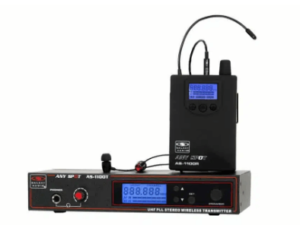
If you are looking for a wireless in-ear monitor system for your whole band the best first option is the Galaxy Audio As-1100 iem system.
It includes a very high-quality transmitter and a receiver that band members can clip onto their belts, straps, or anywhere else! This package also comes with EB4 earbuds for you to use.
The wireless option costs a little more than the previous option, but the benefits are clear. With the AS-1100, you don’t have to worry about tripping over cables.
Capable of transmitting on 120 different frequencies, you don’t have to worry about interference, and provides a clear wireless audio feed to your band members.
2. Sennheiser EK IEM G4 Wireless
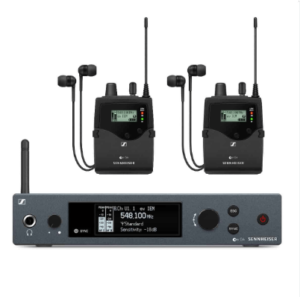
The Galaxy in-ears are a good option for most churches, but if you’re looking for an incredibly high-quality option, the Sennheiser EK IEM G4 is a great option. This is also a great option for touring musicians.
Sennheiser systems are widely recognized as the highest-quality in-ear monitors. The IEM G4 Wireless system is no exception.
You’ll pay a significant premium over other recommendations, but these will provide you with the best in-ear experience.
Similar to the AS-1100 mentioned earlier, this system from Sennheiser includes a transmitter, receiver, and earbuds for monitoring.
This transmitter operates with 1680 selectable frequencies and a range of 300 feet.
Nothing is beyond your ears. It boasts a very user-friendly interface and metering display, providing complete visualization of the current situation.
3. Xvive U4 Professional wireless in-ear monitor system
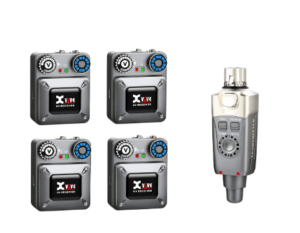
What makes it a favorite of many is that it can be easily built in minutes. Simply connect the transmitter to the mixer and the headphones to the receiver and set them to the same channel. Then all that’s left is to adjust the input and output volumes.
The system has a built-in lithium battery that lasts up to 5 hours. Additionally, the portable size of the component allows you to simply throw it in your bag and play music whenever you want.
This can be especially useful if you need to pack light on the go.
Looking at the technical details, the Xvive in-ear system can cover a range of over 90 feet. It also promises latency of less than 5ms, ensuring performance is as smooth as possible.
Xvive U4 Wireless In-Ear Monitor System Professional IEM system transmitter and beltpack receiver for studios, band rehearsals, and live performances
Xvive U4 Wireless In-Ear Monitor System Professional IEM system transmitter and beltpack receiver for studios, band rehearsals, and live performances
4. Galaxy Audio AS-1200-2D Wireless
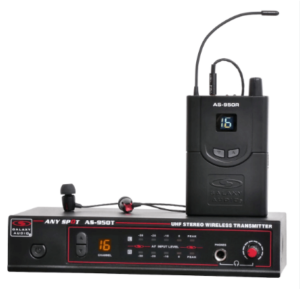
The Galaxy Audio AS-1200 is a durable, reliable, high-fidelity monitoring system that helps your band play their best! The system includes an AS-1200T transmitter with 210 selectable UHF frequencies, stereo or mono transmission, and a backlit LCD display.
Two AS-1200R receivers are equipped with built-in limiters and backlit LCD displays.
If you’re looking to expand your set in the future, the AS-1200 system is designed to work with ensembles of any size by pairing with an unlimited number of additional receivers.
The kit also comes with two sets of EB4 earbuds, Sweetwater’s most popular earbuds for their comfortable fit and life-like sound quality.
With the Galaxy AS-1200 in-ear monitor system, you will have no trouble finding open frequencies. The AS-1200 has 210 frequencies to choose from, allowing you to lock on to open channels even in busy wireless environments.
The Galaxy AS-1200 in-ear monitoring system is built to withstand the rigors of road life. You’ll love that the backlit LCD display makes it easy to see once you’re on stage.
Galaxy Audio EB4 earbuds deliver high-quality sound through a single titanium dynamic driver.
It’s a great option for general-purpose monitoring for vocals, speech, electric guitar, and more. Are you picky about your fit?
The same goes for Galaxy Audio. That’s why each EB4 set includes three sizes of silicone gel sleeves so you can customize your experience. Powered by a durable 51-inch cable with a standard 1/8-inch stereo plug.
5. Sennheiser ew IEM G4-A1 IEM

Of course, it is much more expensive than its predecessor, but this speaks volumes about its consistent quality. Let’s find out what’s special.
First of all, this beast is one of the most versatile IEM systems out there, with the ability to handle a variety of situations. This is thanks to the simultaneous operation of 16 channels and 1,680 selectable frequencies. Additionally, Sennheiser has a bandwidth of 42 MHz.
Users loved that the G4-A1 can cover a range of up to 300 feet, making it ideal for large-scale performances.
The previous systems on our list are good enough for personal use, but the Sennheiser system is a monster in comparison.
Even better, the system introduces an automatic frequency scan feature, making setup easier. The device also includes a small lock to prevent accidental changes to settings.
6. LD Systems MEI 1000 G2
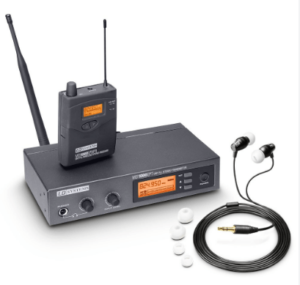
The LD Systems MEI 1000 G2 Wireless In-Ear Monitoring System ISM UK Version is a great, budget-friendly in-ear monitor system that is easy to install, comfortable to use, and requires no license.
The sheer number of settings on offer makes it ideal for traveling musicians and is one of the best ear monitors out there.
Perhaps the main key feature is the use of three monitoring modes: stereo, mono, and focus.
Stereo mode provides different inputs for different ears, while mono mode transmits everything at once. In focus mode, both input signals are sent to both ears, but controls on the receiver allow you to adjust the mixing level between the two inputs.
The wide dynamic range and excellent crosstalk behavior of the 823-832 and 863-865 MHz frequency bands ensure high-quality sound at all times and accurately represent stage sound.
This pack comes with ultra-comfortable in-ear monitors, transmitters, and bodypack, making it the perfect addition to any musician without a huge investment.
7. Shure PSM300 P3TR112GR Wireless
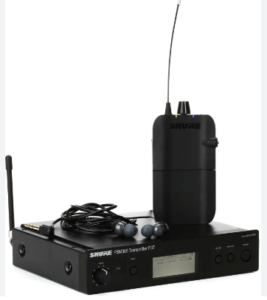
The Shure’s P3TR1122GR version of the PSM300 is slightly cheaper than the P3TRA215CL. Despite this price reduction, our friends are able to deliver excellent sound quality and signal fidelity.
Not to mention it supports 15 channels and offers a wide frequency range to suit a variety of uses.
Even better, this Shure product can send and receive 24 MHz signals without dropouts at over 300 feet. So you have to worry less about technical issues while you’re at center stage.
With one-touch frequency scanning and IR synchronization, setting up this system takes minimal time and effort. For someone who is just starting to experiment with wireless IEM systems, this sounds like a great deal.
The Shure PSM300 wireless personal monitor system with SE215 earphones offers wireless in-ear monitoring with a range of up to 90 meters, as well as one-touch frequency scanning that syncs to the pack and assigns clean channels in seconds.
With 24-bit digital audio, you’ll hear everything you want to hear in crystal clear detail. The device includes patented Audio Reference Companding, which means the device sounds closer to a wired system than wireless and has near-zero latency.
You can also wirelessly transmit two audio channels to create a stereo mix on your in-ear monitors if you want drums on the left and vocals on the right.
You can set up and enable the infrared sync function, battery level indicator, and scan function. breeze.
The included SE215 earphones are completely comfortable thanks to their clarity and high noise isolation and are used by professional musicians around the world.
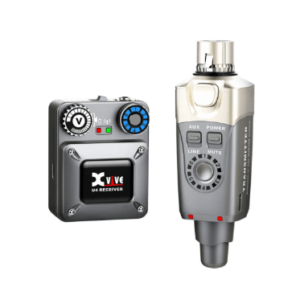
Advantages of Wireless In-Ear Monitor System
There are many key benefits to using in-ear monitors on stage and in rehearsal situations.
The main advantage of in-ear monitors is that they allow you to mix your performance directly into your ears without the need for monitor speakers.
You can also directly control the overall level of your mix via a belt pack or guitar strap attached to your belt. If you use a wireless mic and in-ear monitors,
your mix will feed directly into the in-ears, so you can move anywhere on stage and still hear everything you need to hear.
Thanks to the isolation that in-ear monitors provide, in-ear monitor systems also help prevent noise-induced hearing loss by giving you complete control over the volume supplied to your ears.
The isolation feature helps reduce unwanted background noise so you can hear clearly and lower the volume to a safer level. This is much better for your ears than a loud stage.
There are many benefits to in-ear monitors for drummers, as they allow you to hear every single instrument no matter how loud they are played.
There are also many benefits to in-ear monitors for singers, as they allow you to hear your own voice and music accurately without relying on the capabilities of a PA system or sound engineer.

Wireless In-Ear Monitors vs Cable
This depends a lot on where you stand on stage. If you’re a vocalist or guitarist and tend to move around a lot, a wireless system is right for you.
These systems include in-ear headphones, a belt pack receiver, and a transmitter.
The downside is that these systems are often expensive. If multiple band members or members are using in-ear monitors simultaneously, a cheaper solution is to connect multiple belt pack receivers to a single transmitter.
But the downside to this is that every musician will have the same monitor mix.
If you’re someone who tends to stay in the same spot on stage, such as a drummer or keyboard player, a cable system will probably work well for you.
In this case, the bodypack connects directly to the mixing desk. Therefore, the complete cabling system includes a set of in-ear monitor headphones, a bodypack, and cables. Because it is technically simpler, it is usually a bit cheaper.
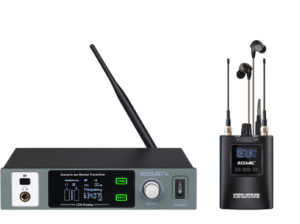
FAQs
What does the system mean in in-ear monitors?
The system refers to the drivers, i.e. the components that play audio. 1, 2, 3, and 4-way systems refer to the number of drivers installed per earpiece.
The general rule is that the more drivers per earpiece, the more detailed the sound will be. In reality, if you have two drivers, one handles the treble range and the other handles the low range.
In the case of a 3-way system, the third driver is responsible for the middle distance. This improves the ‘intelligibility’ of various instruments in the mix.
So, if you’re in a big band with a lot of members, a set of in-ear monitors with more drivers might be right for you.
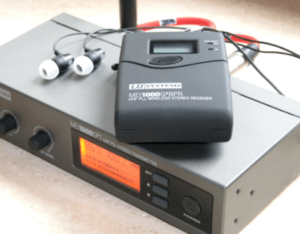
What type of plugs should in-ear monitors have?
You will find that the end of the cable is equipped with a jack plug. For in-ear sets, these are usually small 3.5mm mini jack plugs that fit into a regular set of headphones.
Sometimes they may be equipped with some type of threaded ring so that the plug can be screwed into place and secured to the beltpack. Since the headphones are stereo, you’ll also notice two small black rings around the plug.
This is called a ‘TRS’ (tip-ring-sleeve) connection. The other end of the cable can be unscrewed or detached from the earpiece itself. This is to make it much easier to replace the cable if it breaks.
What does impedance mean in in-ear monitors?
For in-ear monitors, you don’t need to worry too much about this. The impedance (resistance) of headphones is measured in Ohms; the higher this number, the greater the resistance.
When mounted on studio and PA equipment, you can often get a high-powered headphone output, and this works really well with a set of high-impedance hipphones.
However, this does not apply to laptops and mobile phones. What happens if I connect headphones with very high impedance (e.g. 250Ω) to my smartphone?
Basically, even if you turn your phone’s volume up to a maximum, the signal is so weak that you can barely hear anything. Signals transmitted to in-ear monitors typically have a long travel distance, so the resistance is not too high.
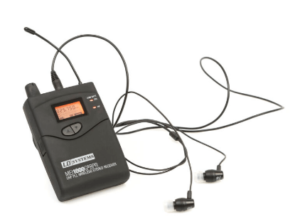
How important is the SPL and frequency response of an in-ear monitor?
The higher the sensitivity (sound pressure level measured in SPL or decibels) of the in-ears, the more sound they can produce. So we can say that a set of in-ears with a higher SPL can produce more sound than a set of in-ears with a lower SPL, even when connected to the same beltpack.
Less important, but something manufacturers tend to make a fuss about, is the frequency response. Human hearing can generally only detect frequencies within the range of 20Hz and 20kHz, so anything outside of this range is not really relevant.
It can also easily happen that one set of headphones at 20Hz performs exceptionally well, while another set actually sounds mediocre at the same frequency.
So try not to be fooled by these numbers. Take a close look at other users’ opinions, and ultimately leave it to your own ears.
What more do you need in an in-ear monitor?
If you’re looking to experience your first set of in-ear monitors, an out-of-the-box system is the easiest choice. If it is a wireless system, it includes a transmitter, receiver (beltpack), and a set of in-ear monitors.
However, while this may mean a significant investment, it will definitely pay off in the end!
Note: Not all systems include an in-ear set, so please double-check.
You will need two XLR or jack cables to connect the transmitter to your mixing desk (depending on your connection).
Always check if these items are included as standard. A rack mount for the transmitter can also be useful if you want to install it in something like a flight case.
Check the product page to see if rack mounts are included or if you will need to purchase them separately. Most bodypacks are powered by one or more batteries, which may not be included, so don’t forget to buy them along with some spares!
Is it better to wear a set of in-ear monitors than to use floor monitors?
Covering your ears with a set of in-ear monitors eliminates floor monitors and frees up much more space on stage. This is especially true if you bring your own equipment and set up the stage yourself.
In-ears also allow for much more freedom of movement than floor monitors. Because you don’t have to stay in one place to hear what’s going on. Floor monitors also tend to only provide a generic mix composed for the entire band.
With an in-ear set, you can stand wherever you want and get a well-balanced, personalized mix. This means you’ll hear exactly what you want to hear (a mix you’ll have to kindly ask your sound engineer for).
Because the sound is directed to your ears, everything sounds a little clearer and you don’t have the feedback issues that sometimes occur when using floor monitors.
The combination of in-ear and floor monitors is also unheard of and actually makes for a pretty good setup.
What sizes of in-ear monitors can I buy?
Most in-ear monitors are suitable for all purposes, and in fact, they almost always fit. You will often receive a few extra sets of earbuds in different sizes (small, medium, large).
More expensive in-ears may actually be made to measure your specific ear shape. As expected, these are much more comfortable and seal over your ears, blocking out ambient noise more effectively.
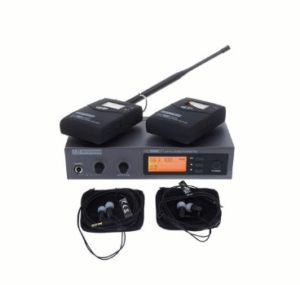
Conclusion
Overall, if you’re a musician starting out with your whole band in the live scene, using in-ear monitor system is a great option.
You’ll definitely see how much this can improve your playing, singing, and overall performance. Wedges can be unstable, cause sound to get lost in the mix, and sometimes cause unpleasant feedback,
so it’s a good idea to keep a set of IEMs in your back pocket even if you don’t use them all the time.
Play at Wembley and you’ll be ready. We believe in you! Most wireless monitor systems, and all of the options on this blog, come with good-quality IEM systems.
